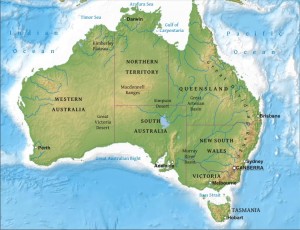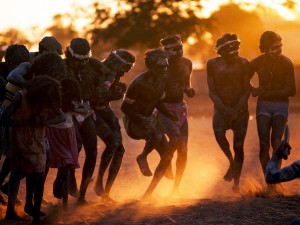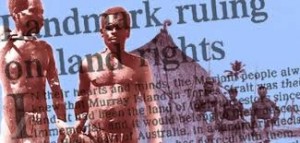Note: This novel was WINNER of Australia’s most prestigious literary award, the Miles Franklin Award for 2005; WINNER of the Commonwealth Writers Prize for Southeast Asia and the South Pacific; and WINNER of the Courier Mail Book of the Year for 2005.
“This [land] is alive in its own right. It’s growing and changing all the time. It breathes…It even talks, to the right person. The truth is, land has to belong to someone to really come alive. It needs a human being to hear it and see it and to understand everything about it—where it came from, where it’s going.”
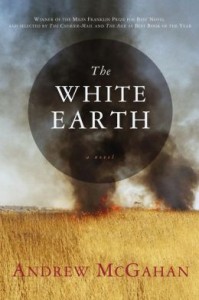 Set on the plains of Queensland, Australia, this award-winning novel defies genre. On one level it tells of the long, epic struggle of white farmers to tame a land which has a life of its own—and which sometimes costs farmers their own lives. On another, it is an historical record of the genocide of the native aborigine population by colonizers who do not recognize or care about the aborigines’ centuries-long relationship with the land or any claims they might have to it. On still other levels, it is a mystery story, full of murder and deceit, and a Gothic study of a man who lets his obsession with a particular piece of land and a particular, now-decaying mansion control every aspect of his life. And it is also the coming-of-age story of a young boy who may one day represent a fresh, new spirit—one of respect for the earth, its history, and all the people who have walked it.
Set on the plains of Queensland, Australia, this award-winning novel defies genre. On one level it tells of the long, epic struggle of white farmers to tame a land which has a life of its own—and which sometimes costs farmers their own lives. On another, it is an historical record of the genocide of the native aborigine population by colonizers who do not recognize or care about the aborigines’ centuries-long relationship with the land or any claims they might have to it. On still other levels, it is a mystery story, full of murder and deceit, and a Gothic study of a man who lets his obsession with a particular piece of land and a particular, now-decaying mansion control every aspect of his life. And it is also the coming-of-age story of a young boy who may one day represent a fresh, new spirit—one of respect for the earth, its history, and all the people who have walked it.
The young boy is William, an eight-year-old when the novel opens in 1992. As he looks out the window of his family’s small farm, he sees what he believes is a nuclear explosion, soon learning that it is an explosion and fire in his family’s wheat field which has killed his father. He and his mother, with no resources, accept an invitation to move to Kuran Station, a remote area west of Brisbane, where his great-uncle John McIvor owns a huge farm. William and his mother, upon their arrival, discover that the farm’s once-grand manse is now a decrepit, falling-down ruin. John McIvor lives alone there with a disagreeable, if not evil, housekeeper. He has alienated his entire family, and he is now going to set up tests to see if William might be a suitable heir to his property–If William can prove that his love and appreciation for the land are equal to that of John McIvor.
William’s story alternates with that of John McIvor as a young man in the late 1920s. John’s father, Daniel, “a hard man,” was manager for many years of the Kuran Station farm, then owned by the White family (whose name is obviously symbolic). The McIvors’ efforts on behalf of the farm, even including the “resettlement” of the aboriginal population, have led both Daniel and John to feel akin to owners themselves. When the Depression hits, however, Daniel is fired, and the family is banished from Kuran Station. John, bereft, regards his banishment as “an amputation,” and he vows that someday he will become the owner of the Kuran Station land. John McIvor, an old man when William first meets him, has eventually achieved that goal, and he is now determined to leave a legacy. “You have to leave someone behind who remembers,” he says, and William is the only person who might be suitable.
As the novel develops, it becomes a microcosm of Australia’s history of land ownership. The national government is proposing a Native Title Act, which would provide access to ancestral lands for the remaining aboriginal population, if they can prove their connections to it. John McIvor, in turn, forms the conservative Australian Independence League to oppose this act, believing it to be an illegal repossession of land the farmers have made their own. He arranges for William to remain at home and not go to school, telling him, instead, to explore, get to know the land, feel its spirit, and understand its soul. In various episodes, William finds sacred places and sees visions—of a man on fire, an axe murder, a long-dead explorer, and the mythical bunyip, and he hears the rustling of aborigines from the past when the wind blows across the plains.
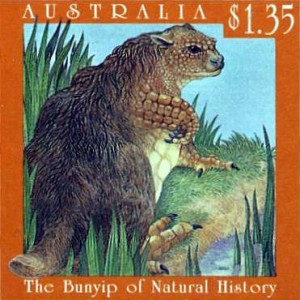
The mythical Bunyip, which young William sees while alone. (Posted in memory of Stephen A. Haines, long-time Amazon reviewer and friend, who was known to all as The Bunyip.)
On every level, the novel is a Gothic page-turner, filled with energy and excitement. The mysterious uncle living in a decrepit mansion with padlocked rooms, an evil housekeeper, a mysterious doctor, promises of inheritance, and the quest for knowledge all tie this novel to the Gothic tradition of the past. But the novel is also a bit frustrating. Several main characters are shown largely in terms of the obsessions which grip them, and this makes them less than sympathetic and often unlikable for the reader. The extended explanation of Native Title legislation, while fascinating for its attempts to right some of the wrongs done to the aborigines, sometimes bogs down the narrative in legalistic details, and the descriptions of the land, gorgeous at the beginning of the novel, become heavy (and sometimes turn into “purple prose”), especially when William, seriously ill, gets lost on the plains.
Released in the US in January, 2007, this novel attempts to do it all, and it succeeds on many levels. Those who become involved in the story of William (and I was one) may become so caught up in the excitement of his story that they will hardly care about the areas in which the novel may be less successful. Quick-paced and filled with new information for non-Australian readers, this novel is readable, entertaining, and informative.
NOTE: ANOTHER NOVEL which uses the issue of aboriginal land rights as the main conflict of the novel is: MOONLIGHT DOWNS (entitled DIAMOND DOVE in Australia) by Adrian Hyland, WINNER of the Ned Kelly Award for First Fiction in 2007. Kim Scott’s novel THAT DEADMAN DANCE, the WINNER of the Miles Franklin Award for 2011, provides a broader, more historical study of how the whites became the dominant culture in Australia, starting in the early 1800s.
Photos, in order: The author’s photo, by Rodger Cummins, appears on http://www.smh.com.au/
The map of Australia is from Http://Www.Freeworldmaps.Net/Australia/ Click on the link (or on the map above) to get an enlargement.
The aboriginal dance photo may be found on http://travel.nationalgeographic.com
William sees the mythical Bunyip while alone on the plains. The Australian stamp appears on http://mywetdesert.blogspot.com It is posted here in memory of Stephen A. Haines, an Amazon reviewer for many years and long-time friend, who was known to all as The Bunyip.
The recent ruling regarding aboriginal land rights is discussed here: http://rightnow.org.au/
A Reading Group Guide is available here: http://www.allenandunwin.com/_

